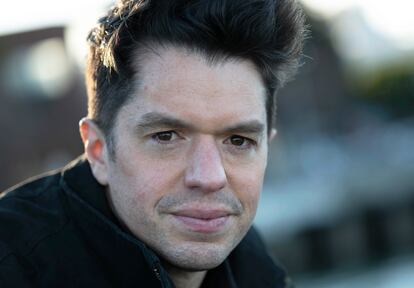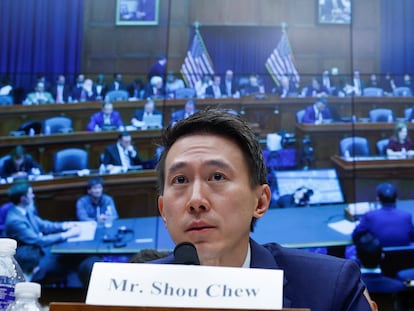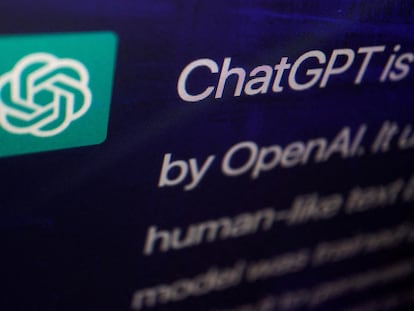YouTube’s chaotic rise to world domination: ‘Not long ago virtually no one took it seriously’
As Susan Wojcicki’s stewardship of the company was coming to an end, journalist Mark Bergen published a history of the platform’s oft-underappreciated impact

March 15, 2019, was the biggest day in YouTube’s history. A terrorist was about to enter a mosque in Christchurch, New Zealand, where he would kill 50 people that day. But before the massacre began, while he was still in the car, the killer switched on his camera. Before getting out, he said: “Subscribe to PewDiePie.” That phrase echoed a meme about the biggest YouTuber at the time. But when uttered by a terrorist before he opened fire, it wasn’t funny. Nor was the fact that YouTube had been the killer’s platform of choice.
“Not long ago virtually no one took YouTube that seriously,” writes American journalist Mark Bergen in his book Like, Comment, Subscribe: Inside YouTube’s Chaotic Rise to World Domination. It is the closest thing so far to a history of the platform. In March 2019, YouTube got serious: “An employee told me that the world would look at YouTube history before these revisions the way we look at cars before seat belts,” Bergen says. Until then, YouTube had been ambiguous about the videos it allowed on the platform. Then, the rules were revised, and the company clarified where the uncrossable lines were. Racist extremism was no longer going to have it so easy.
“I think that was one of their biggest wake-up calls…around content moderation,” Bergen tells EL PAÍS by videocall from London, where he just moved. “I think Covid was probably just as significant, and the George Floyd killing in the U.S. really changed their rules and system. It looks like a totally different platform [now].”
So, what was YouTube like then and what has its impact been? In his book, Bergen traces its journey from the platform’s founding in 2005 by three young people, who created something — a page for posting videos — that seems obvious today but was much more complex then.
In 2006, Google was trying to beat out YouTube with Google Video. They didn’t succeed, so it was easier for the company to buy it. At just a year old, YouTube already had its own character, and almost every user was uploading videos: “Years before Instagram influencers and TikTok stars, these young creators invented a new model of fame, attracting audiences not yet accustomed to spending hours of their days, distractedly hopping around the internet,” Bergen writes.
Google was already a billion-dollar giant in 2006. YouTube’s fit was difficult. From the beginning, its complex, contradictory and wrong decisions have made the platform what it is today. Indeed, YouTube has surpassed the audiovisual competition that ridiculed it in 2006. Few imagined that the combination of Internet videos and unleashing the creativity of millions of people with only a camera could change entertainment forever: “It’s a sea change in how we think about entertainment. It’s undeniably true that it has given careers to people that don’t have careers in traditional media and never would,” says Bergen.
Below are some of the important decisions, milestones and findings in YouTube’s 18-year rise:
1. YouTubers arrive.
“It’s hard to imagine CBS or Netflix broadcasting a trans woman unpacking Hegel in lingerie or the Hammurabi Code in cat-eye contacts,” Bergen writes. Clearly, YouTubers never would have existed without YouTube. Few executives would have believed that a kid telling jokes in front of a screen and someone talking about obscure theorems for 2 hours could interest millions of people.
Today, the biggest YouTuber is Mr. Beast, who barely appears in the book because of the recency of his success. His videos are incredible (“I survived 50 hours in Antarctica” and “1,000 blind people see for the first time” are the most recent ones); they resemble the videos that were originally posted on YouTube, which Bergen describes several times as the era of “dogs on skateboards,” meaning funny videos with little else to them. “[Mr. Beast] is fascinating… I don’t quite understand it,” Bergen says. “I feel like I need to talk to 12-year-olds to understand him… He’s, like, kind of charismatic but not really. He operates like a machine, basically. He studies all the data to optimize the thumbnails and how to make videos.”
2. YouTube doesn’t just consist of Youtubers
YouTube is now a great repository for human memory, as the book says. It’s hard to think of a World Cup goal, a song from our youth, someone playing video games or a funny video that is not available on YouTube. The website’s search engine is the second most-used in the world, trailing only Google, the company that owns it.
But there are two other categories that are especially important on YouTube, according to the book: channels for children and educational channels. Some children’s channels figure more prominently than traditional YouTubers: by the end of 2020, the five most watched-channels on YouTube were for preschoolers. For example, YouTube discovered that millions of children could watch non-stop videos of anonymous hands opening surprises or one with another child playing with toys they wanted. On Ryan’s World, which is probably the most popular channel for kids, there is a video of Easter eggs and a slide that has been viewed 2 billion times. Mr. Beast’s most popular video has been viewed 378 million times.
The success of videos geared toward children has given rise to extremely successful channels that show weird relationships between adults dressed as celebrities and other similarly suspicious variants, some of which have lewd comments that appear underneath the videos. Here, too, YouTube had to take decisive action. But YouTube wasn’t the only one to act. The US government also enforced a law that limits these channels’ advertising revenue: “The only real regulation of a big tech company [in the United States] was around the FTC [Federal Trade Commission] and children’s privacy [the Children’s Online Privacy Protection Act]. Everything else has kind of been just talk. To my understanding, people at least at the top [were] shocked by what was happening, and I think that speaks to the fact that they’re pretty naive about how the world works and how their platform works,” Bergen says.
According to the journalist, YouTube’s educational side has been “one of the biggest blown opportunities… [It’s] something they’ve been trying to do for a while, getting schools and becoming utilized [as] content, either as a business or merely as something that they can be pretty proud of and point to. I think they made a lot of different attempts. [Some] educational creators make pretty good ads money, but not on a massive, scale. Like, they’re just not gonna be competing with Mr. Beast [as they would] if YouTube really invested in them. It feels like they would have a better way to invest there, [as] a business rather than just millions of creators,” says Bergen.
3. The two most significant decisions
When YouTube had been around for a few years, management made two decisions that triggered a chain of events, making the site what it is today: changing the metric from clicks to “time viewed” and paying creators half of the advertising revenue generated by their videos. In one stroke, clickbait with misleading headlines was eliminated, and millions of people tried to create content that would appeal to the platform’s audience.
“I would say, universally, people there say it’s a better metric but they didn’t think about the consequences, the side effects around safety and content moderation,” Bergen says. “That’s just a different category of problem. Right? It’s like spam versus hate speech versus misinformation,” he adds. Something similar happened with its decision to pay the content creators: suddenly YouTube had white supremacists and alleged pedophiles as “business partners.” “It’s a lot more complicated, as we see with Spotify and Joe Rogan,” says Bergen.
4. A marvel of engineering
In 2010, 100 hours of video per minute were being uploaded to YouTube. Just a few years earlier, no one imagined that it was even technically possible; a common joke at YouTube in the early days was that the platform was going to break the internet. By 2020, that figure had increased fivefold. YouTube’s servers are so reliable that there are companies that upload entire hidden camera loops and leave them private, Bergen explains. “It wasn’t their only priority because, during their first decade, they were also worried about the business side, but mostly they were worried about making it work. [Google co-founder] Larry Page’s obsession was limiting the buffering speed [and for] the founders of YouTube it was making sure that you can upload one video very quickly, seamlessly… making sure that people can watch it on demand, instantly, zero latency.”
5. Why it has been underestimated
Susan Wojcicki, YouTube’s CEO for 10 years through February 2023, never went to Congress to testify. After Trump’s election, at the height of the social media crisis, YouTube was not attracting attention. For years, white and Islamic extremism, disinformation, and hate speech existed calmly on the web. YouTube’s motto was that the audience ruled and that if someone wanted to see a video that said unpleasant things, there was a reason. “It’s a rudderless ship without a clear viewpoint on its absolutely momentous role in the overall geo-sociopolitical landscape,” one employee said at the time.
How did YouTube manage to get off the hook? Bergen sees several reasons. One, videos are harder to analyze than Facebook or Twitter posts. Two, it’s part of Google, which already had other, more serious antitrust-related problems. Three, politicians have used it more as a service, like Maps or a search engine, so it didn’t seem dangerous; younger people use it as their television. And four, Wojcicki’s discretion was important. “It looks really good for [Senator] Ted Cruz or [Congressman] David Cicilline to have a clip where they’re grilling Mark Zuckerberg because everyone knows Mark Zuckerberg. Most people have strong opinions about him. But the average news consumer or constituent doesn’t know who Susan Wojcicki is. I have that anecdote in the book, too; someone in DC tried to set up meetings with her. And no one in DC knew who she was,” says Bergen.
Sign up for our weekly newsletter to get more English-language news coverage from EL PAÍS USA Edition










































